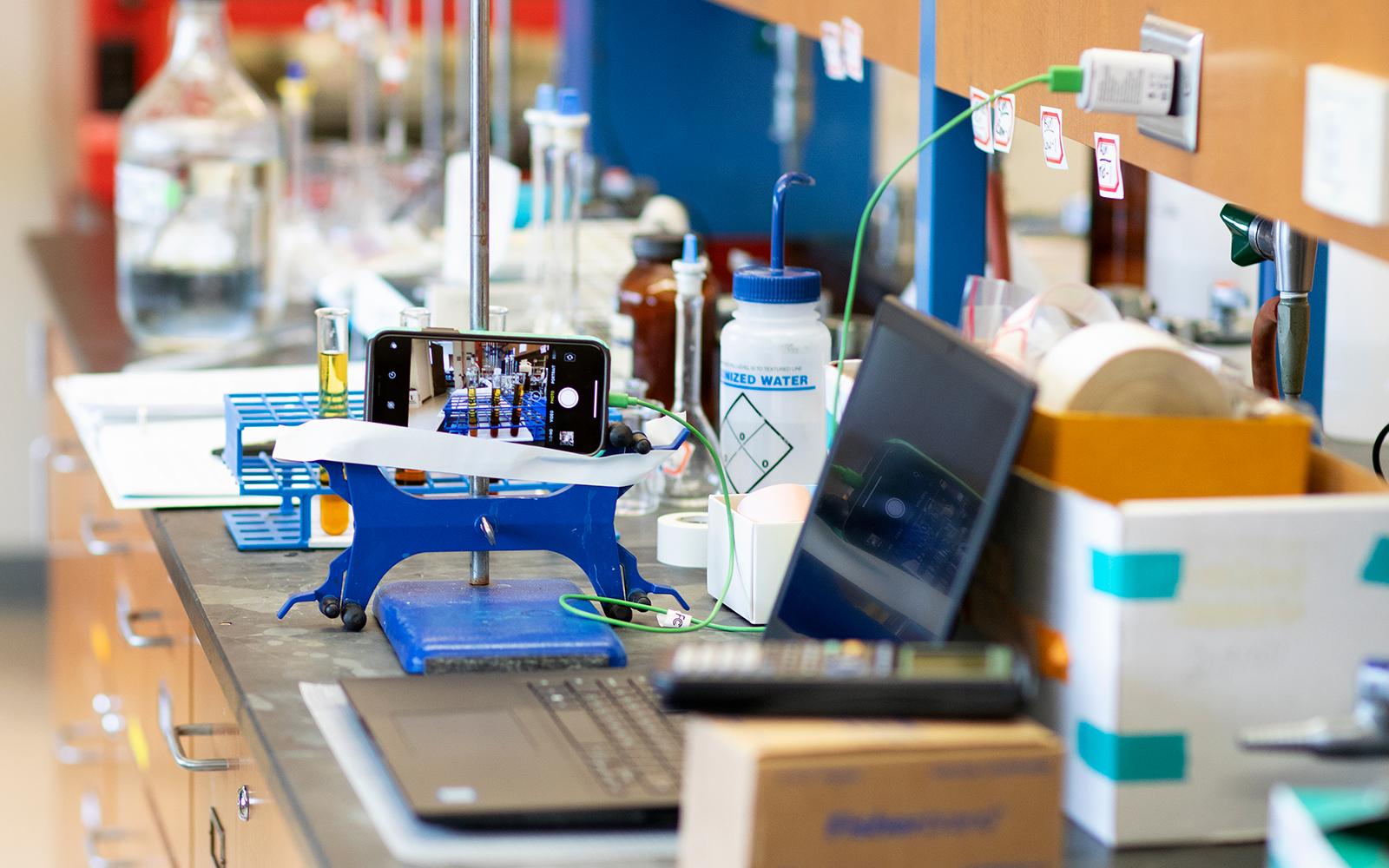Making solutions, preparing samples, and studying reactions and the formation of complex ions in the lab—the show must go on.
Fitting chemistry challenges onto the flat face of a computer has become a sudden and unexpected specialty for John Proetta '09. An instructional support assistant at SUNY Potsdam, his forte has traditionally been lab chemicals. Now, he has been thrust into the role of crafting and facilitating a unified approach to the online delivery of chemistry lab instruction.
In a world where the old playbook has been thrown out, Proetta finds himself on tight deadline, working one-on-one to help instructors in their scramble to present their materials through the screen. Among those who have turned to him, Dr. Maria Hepel had previously relied on a face-to-face style of instruction with very limited technology. Proetta helped get an internet connection to her house for the first time and is working closely with her on creating online presentations that will help Hepel, a SUNY Distinguished Professor of chemistry at SUNY Potsdam, to grab the digital challenge and run with it.
“I’m teaching professors, I’m teaching students and I’m learning myself,” Proetta said.

Creating streamlined access to lab material, integrating lessons to online platforms, shooting videos of lab demonstrations and figuring out how to get 100 students into a lecture exam at the same time are just a few of the challenges Proetta has tackled.
“We’re having trouble streaming,” he said. “There are so many students using the platform through the school. That’s important, but the volume is wild, so we have to think outside of the box. Instead of uploading the video, we’re having to upload it to YouTube, so it allows the bandwidth to come from YouTube and you stream it from the internet.”
Perhaps the most important question deals with virtual community — the only one we are allowed to have as the world isolates itself in an effort to shut down the novel coronavirus COVID-19.
“We already feel like we’ve lost connection with the students, so to see the instructor, it helps with the connection,” Proetta said. “It helps to see them and keeps the spirit up.”
His primary connection to chemistry has been the wet lab aspect, “the cooking” as Proetta calls it — the mixing and preparation. In kinetics lab, SUNY Potsdam students study an iodine clock reaction and Proetta is back in his element, mixing the different concentrations and setting the experiment. Only now, he films it and the students have to time the reaction using their cellphones.
“What’s cool is you can still capture it all on film,” Proetta said. “They still get the same experience, but they’re not getting their hands dirty.”
A key difference with remote instruction is that students are not able to be on hand to operate lab equipment themselves. And even though some experiences are inevitably lost in translation, Proetta’s challenge is to find the best substitute.“We have to make it work,” he said, “and with the internet at our fingers, the possibilities are endless. It’s just having the time and physical space to make it all happen. And, at this point, bandwidth.”
Article by Bret Yager, photos by Jason Hunter
